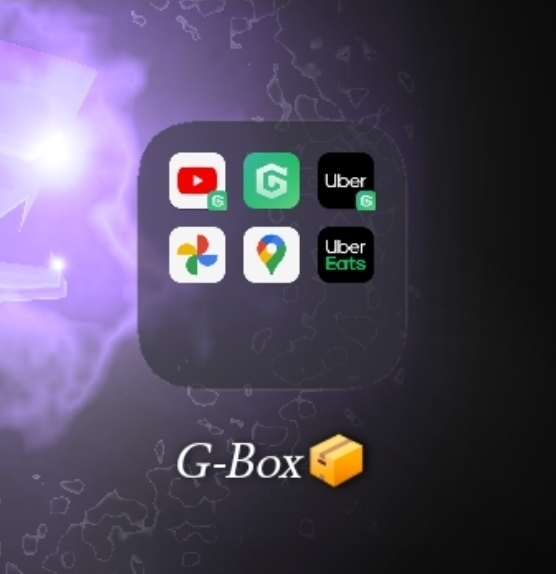Why AppGallery Requires GBox for Facebook Install
Huawei’s AppGallery serves as the primary app distribution platform on their devices. However, some apps, like Facebook, require additional steps for installation. Users seeking Facebook in AppGallery are often redirected to GBox, a tool that facilitates apps’ functionality on Huawei devices. This blog will explore the reasons behind this process, emphasizing the technical necessity and security implications. We’ll also guide you through how to download facebook in huawei using GBox and delve into the precautions you should take when using it. Understanding these elements will enhance your experience with Huawei devices and ensure the secure installation of apps dependent on Google services.

Why AppGallery Redirects to GBox for Facebook
AppGallery’s Policy on Google-Dependent Apps
Huawei’s AppGallery doesn’t include Facebook or other apps that require Google Mobile Services (GMS). To fill that gap, Huawei offers GBox—a sandboxed virtual environment that simulates Google APIs. When you launch Facebook (or any such app) inside GBox, it creates a parallel Google framework, allowing apps to function normally. GBox installs shortcuts to your home screen while running essential services quietly in the background. It’s a smooth, secure solution that bridges the API gap, helping these apps work as intended on Huawei devices.
Technical Necessity: Facebook Relies on Google APIs
Facebook’s functionality is intricately tied to Google’s APIs, which include critical services like location tracking, push notifications, and advertisements. For optimal performance, Facebook needs access to these APIs, typically unavailable in devices lacking GMS. Hence, GBox becomes indispensable. It equips Huawei users with a virtual environment that supplies these APIs, ensuring Facebook runs as intended. This technical requirement explains why AppGallery users installing Facebook encounter a prompt to utilize GBox. Without this emulation, Facebook would likely suffer from faulty features or inability to launch, depriving users of a seamless social media experience.
Step-by-Step: Installing Facebook via GBox
Searching for Facebook in AppGallery
Open Huawei’s AppGallery and use the search bar to find Facebook. You may notice that the app is not available for direct download like other apps. Instead, the search results indicate that GBox is required for its installation. This redirection is intentional, ensuring users can access the vital services Facebook needs by integrating it with GBox. You are only a few steps away from completing the process, maintaining the functionality by adhering to AppGallery’s setup procedures.
GBox Installation Prompt and Permissions
Upon attempting to install Facebook, AppGallery prompts you to install GBox if it isn’t already present on your device. Accept the installation, and GBox will begin downloading. During installation, GBox requests access to specific system permissions to replicate the needed Google APIs environment. Allowing these permissions is crucial, as they enable Facebook to function correctly by providing the virtual backbone it relies on. Be assured that Huawei has vetted GBox to ensure security and privacy compliance.
Launching Facebook and Verifying Login
After completing the GBox installation, Facebook will install. Open Facebook and proceed with logging in using your credentials. Ensure that all functionalities are intact, verifying that notifications, location services, and the news feed load as expected. If issues arise, reboot your device or check GBox’s permissions to ensure proper integration. Successful installation confirms that the workaround is effective for utilizing Facebook, preserving its full range of offerings on Huawei devices.
Security and Privacy Considerations
AppGallery’s Vetting of GBox
Huawei places user security at the forefront, meticulously vetting GBox to ensure it meets stringent privacy standards. Before being available in AppGallery, GBox undergoes rigorous testing for vulnerabilities and compliance with data protection regulations. This diligence underscores Huawei’s commitment to user safety, permitting reliable usage of intermediary solutions like GBox for apps requiring GMS. Users can confidently install GBox, knowing it meets recommended security protocols established by AppGallery.

Risks and Best Practices with GBox
While GBox aids in functionality, users must exercise caution. Potential security risks include unauthorized data access if permissions are mishandled. To mitigate risks, regularly update both GBox and involved apps to their latest versions. Review app permissions periodically, opting for only those essential for app functionality. Educating yourself on GBox’s role helps in recognizing any unusual behavior, allowing proactive threat management. Adhering to these best practices guarantees a secure application experience beyond what GBox inherently provides.
Conclusion
Huawei’s AppGallery and GBox partnership allows users to overcome limitations imposed on apps reliant on GMS, like Facebook. By redirecting installations through GBox, Huawei ensures users can access essential Google APIs services to maintain app functionality. The installation guide simplifies this process, ensuring smooth operation on Huawei devices. Understanding security aspects further enriches this experience, providing peace of mind regarding data safety. Keep informed about updates and secure practices—this knowledge empowers you to make the most of Huawei’s app ecosystem.
